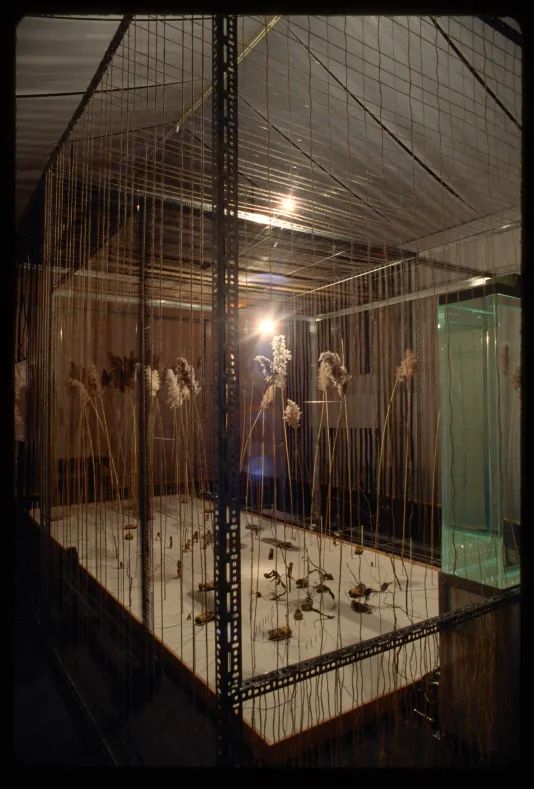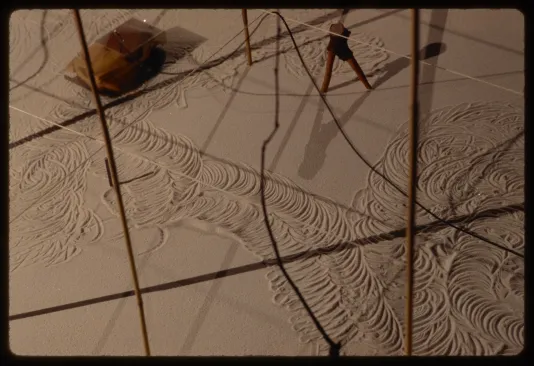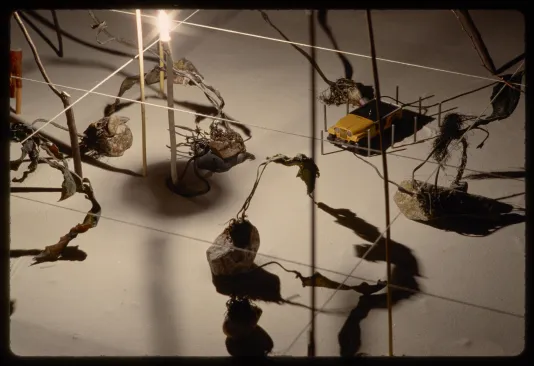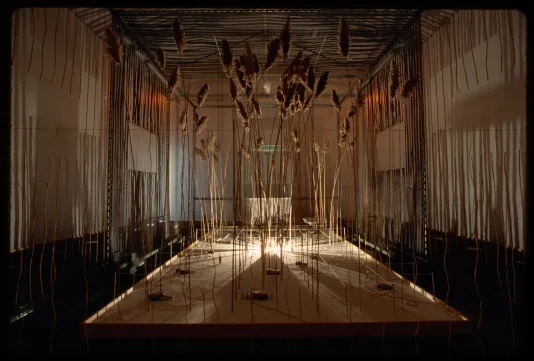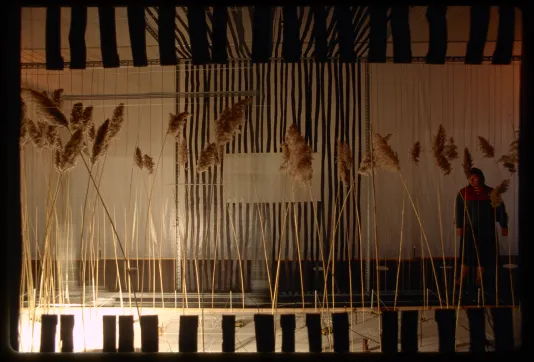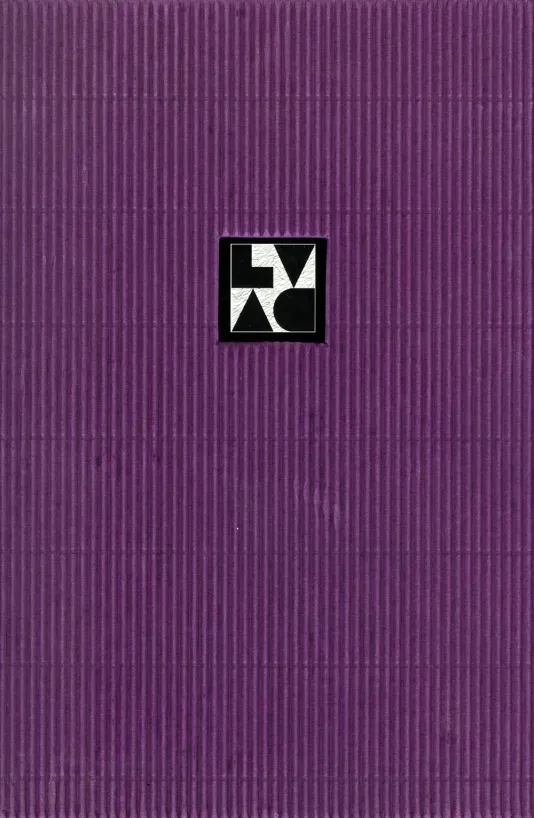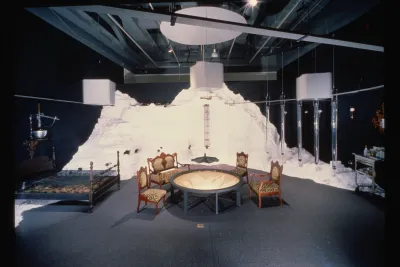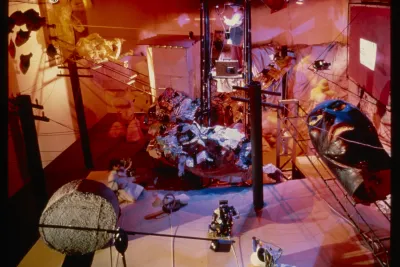Installation view, Carl Cheng: Impressions of an Invisible Sculpture, MIT List Visual Arts Center, 1988.
Carl Cheng: Impressions of an Invisible Sculpture (Artist-in-Residence)
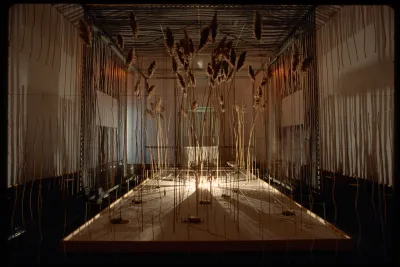
Through his elaborately constructed environments, Carl Cheng blurs the line between nature and human invention, positing an interconnected view of the material world: “There’s no difference between picking up bolts to use in my work and going out there and digging up some earth. It’s all the same.”
For his residency at the List Visual Arts Center, the artist has developed Impressions of an Invisible Sculpture, a new, dreamlike installation evoking an ephemeral habitat of found objects, kinetic sculptures, and plant life.
On entering the gallery, the diverse elements of Impressions of an Invisible Sculpture are blocked by a large, translucent paper building that fills the space. Shadows dance along the building’s semi-sheer surfaces, pointing to mysterious operations within. Inside, ropes and paper strips sway from a metal structure, with lights projecting this movement onto the walls. A low table full of sand takes up the floor. Tall, willowy reeds and curling twigs emerge from the surface, as mechanical cars dart erratically and leave twisting patterns in their wake. A grid made of string hovers above this activity, seeming to impart order once again on the shifting terrain. At the far end of the room sits what Cheng describes as “the brains of the piece”: a computer-programmed bubble machine that sends a randomized pattern of ring bubbles up through a large, luminous tank of water. The timing of the bubble machine guides the other kinetic elements of the exhibition, so that every visit to the gallery offers a unique choreography. While this layered, complex installation appears spontaneous—almost as though it came into being on its own—the connection between each element is precisely governed. Rather than attempt to elaborate the workings of a system, Cheng’s installation leaves impressions—ephemeral and emotional imagistic fragments—of what interconnectedness might feel like.
Along with critiquing the divide between nature and culture, Cheng’s practice also takes aim at art-world distinctions between fine art and design. Throughout the 1960s and seventies, Cheng made work under the name John Doe Co., an unusual moniker that served a few purposes: to point to the influence of his industrial design training on his practice; to satirize the growing intrusion of capitalist gain on art production; and to comment on anti-Asian discrimination in the United States following the Vietnam War. Through its integration of new media and computer programming, Impressions of an Invisible Sculpture continues this thread of inquiry, proposing that technology is inseparable from the world of materials that artists must contend with.
Impressions of an Invisible Sculpture was made possible through the generous support of the Massachusetts Council on the Arts and Humanities and the National Endowment for the Arts.
Sponsors
This exhibition is made possible with support from the New Works Program of the Massachusetts Council on the Arts and Humanities and the National Endowment for the Arts.
